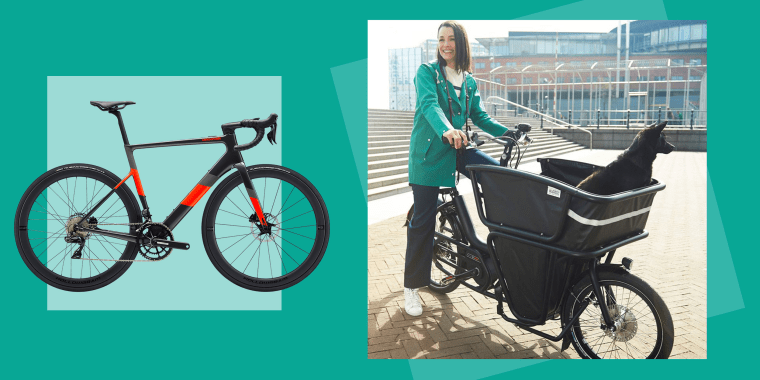
When you are looking for an electric bike for sale, you’ll want to make sure you choose one with Pedal Assist (PAS) so that you don’t have to worry about pedalling too much. By adding extra energy when you pedal, electric bikes are faster and go farther than regular bicycles. Some electric bikes have throttles, which allow you to accelerate without pedaling, but some are purely electric.
Class 1 vs 2
It’s important to understand the differences between Class 1 and Class 2 electric bikes. One major difference between them is the type of operation. Class 1 electric bikes are pedal-assisted, and their operation time and mileage range are longer than those of Class 2. Full-electric bikes, on the other hand, are fully electric and deplete the battery much more quickly than pedal-assisted models. As such, they are classified as Class 2 electric bikes.
In terms of range, class 2 e-bikes are faster and can assist you with pedaling up to 20 mph. The class 2 model has a throttle like a motorcycle, which means you can use it to increase the speed without pedaling. The class 3 model is not meant for riding on multi-use trails, but is still available as a road or commuter bike. For off-road riding, however, class 4 electric bikes are the most common. These bikes are also the most expensive and often have limited ranges.
While each of these bikes has unique performance and price, it’s important to keep in mind that you will have to trade some range for increased performance. While you may get more torque and speed with a high-powered motor, your riding range will suffer. Fortunately, e-bike manufacturers pay attention to the power plant in each model. Using Bosch’s E-Bike Range Assistant, you can see how these two factors interplay to determine riding range.
The major difference between Class 1 and Class 2 electric bikes is the speed limit. Class 1 electric bikes are only legal on 20 mph. They cannot go higher than that. However, some models offer throttle-only capabilities, allowing you to ride without pedaling. While they may be slower than their counterparts, both types can reach speeds of up to 28 miles per hour. The difference between class 1 and Class 2 electric bikes is largely cosmetic, although it is worth considering.
Weight
When it comes to deciding which electric bike to buy, weight is a major factor. While regular bicycles weigh about 30 to 40 pounds, electric bikes can weigh between 38 and 70 pounds. The weight of the battery pack, the motor, and other components are all significant factors in the total weight of an electric bike. A battery can take up to five pounds of weight, so this should be weighed before purchasing. A bike with a high weight capacity can be ridden just as quickly as a light, conventional bicycle.
The battery pack, motor, and other components of an electric bike can add several kilograms to the total weight. Some bikes come with more battery capacity and larger batteries, but this increases the overall weight of the bike. Another major factor in the weight of an electric bike is its design. Some models are folding, and others are not. These foldable electric bikes are easier to maintain and don’t block views. If you’re worried about your child’s safety, you can purchase one that doesn’t fold.
The weight of an electric bike will depend on your intended use. If you’re going to be riding it for long distances, you’ll want to consider how heavy it will be. If you plan to commute a short distance, then this won’t matter nearly as much as an electric bike that needs to be carried. However, for longer commutes, you may want to get a bigger motor and a larger battery. Both of these factors will add to the weight of the bike, so you’ll want to consider all of these factors before purchasing.
Although e-bikes have no separate classification for weight, they do have different types. There are mountain ebikes, cruise ebikes, and fat tire ebikes. While a general limit for ebike weight is 45 pounds, the maximum weight capacity will vary from model to model. Mid-performance electric bikes should weigh 35-45 pounds. For high-performance bikes, the weight limit is closer to 60 pounds.
Gears
The gears of an electric bike are critical to its performance. The motor needs a battery to work, so the bike’s gears help extend that battery’s life. The gears of an electric bike also help you pedal more efficiently and increase the distance you can travel. It’s important to understand the gears of an electric bike before you make a purchase. Here’s what you should look for when you’re shopping for one.
The hub gears are typically the best choice for low maintenance utility riding. These bikes also tend to be lightweight. If you’re new to e-bikes, you may want to consider the Rohloff gear. This type is more user-friendly for those who have never tried gears before. In addition, hub gears are easier to use for newbies. Some bikes have hub gears, while others use Rohloff.
Another thing to note about an electric bike’s gears is that it can have multiple gears. The main goal of gears is to vary the amount of pedaling effort passed to the wheels. The principles of gears on conventional bikes are the same as with an electric bike. However, the mechanics of shifting between mechanical and electric assist levels differ slightly. You should use the left gear shifter to change the electric assist levels and the right gear shifter to adjust the mechanical gears.
There are two main modes for an e-bike: power and automatic. The power mode is the highest support mode, giving you the greatest boost from the motor. It also allows you to accelerate and climb with less effort and makes the E-bike easier to control. However, be aware that high support modes will cause sudden bursts of power, so it’s best to stick to lower gears when riding to avoid overly accelerated speeds.
Price
When it comes to the price of an electric bike, it can be difficult to gauge. Although the sticker price might be high, the true cost often lies in the value that it adds to our lives. Electric bikes are no different. They are extremely convenient and can be used within your own city, saving you the cost of transportation costs. The following are some tips to help you decide whether or not you want to purchase an electric bike. You may also want to consider the government subsidies available for electric bikes.
Premium E-bikes: Compared to the budget-friendly ones, the high-end electric bikes can cost upwards of $10,000. They feature top-of-the-line components and superior engineering assemblage. They’re ideal for mountain biking and are designed with ample energy storage. However, these bikes are not for everyone. For the average person, a cheap electric bike will suit their needs just fine. However, it’s better to spend more money on an electric bike that will allow you to ride further without having to charge it all the time.
The average price of an electric bike is between $499 and $2000. Some models come with features such as Bluetooth(r) connectivity, a phone holder, and Bluetooth(r) connectivity. These features can help riders focus on the road rather than their phone. Depending on the style of electric bike you buy, the price can range from $1800 to $8000. As the market grows, prices will come down. They’re far more affordable than a typical car.
Whether you’re buying an electric bike for recreational use or for transportation, the price doesn’t have to break the bank. There are many affordable models available for first-time buyers. And with a little research, you can find the perfect eBike for your needs. Take your time, compare prices, and decide if you want to buy pedals. You’ll be pleased with the price. When you make your decision, remember that a bike is an investment, not a luxury.
Design
The foldable electric bike has been designed using Creo Parametric software. The load/stress produced when a rider sits on the seat is taken into account for the foldable electric bike. Its design is further analysed using FEA and static analyses. Finally, it is manufactured according to the design criteria. Here’s how it’s designed. Listed below are some of the most important features of the foldable electric bike.
The frame of the E-Bike is made of mild steel. Its design was based on precise mechanical calculations and four to six welding points. This helps the rider to be safe while riding the electric bike, as the center of gravity is located near the seat tube. The frame was constructed using mild steel, as it’s inexpensive and easy to work with. Once complete, the bike can carry up to a 250-pound rider.
A new design of electric bike is the Cybic Egret L1. Its name comes from the noble and elegant egret bird. This e-bike’s DTST intelligent algorithm improves energy efficiency and extends its range by ten kilometers. Besides, its beauty and talent have been combined. The Egret L1 comes with a GPS system that records your riding track. It also has an automobile grade lithium battery and dual BMS protection.
The throttle of an electric bike is controlled by the thumb or a small lever attached to the handlebar. The motor controller connects the battery to a BLDC motor. The motor controller limits the current and voltage of the electric motor. As a result, the EV has two or three modes to maximize its efficiency. One mode maximizes range at the expense of acceleration, torque, and off-road performance. Another mode is pedelec power control.

